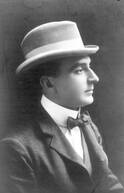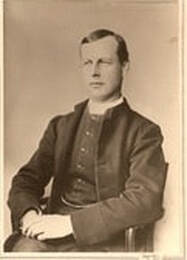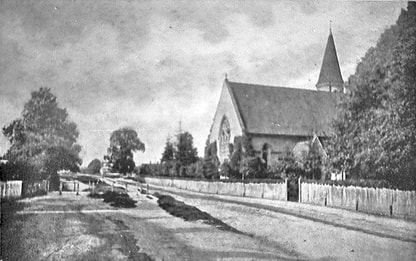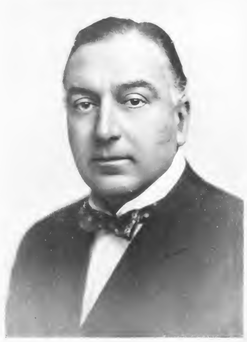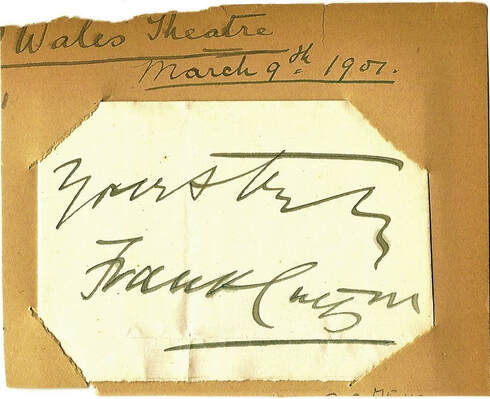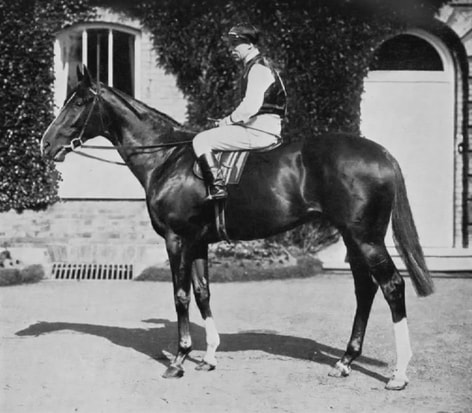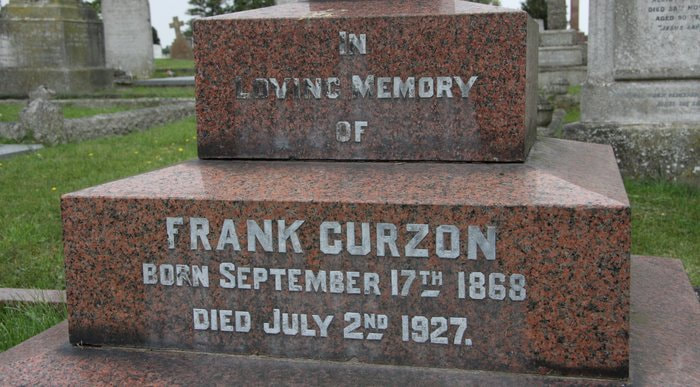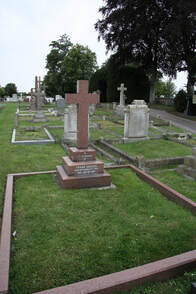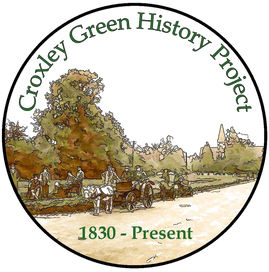Frank Curzon - Theatre Impresario 1869-1927
Francis Arthur ‘Frank’ Curzon was born in Liverpool in 1868. He was the son of William Clarke Deeley, of Curzon Park, Cheshire, a wealthy businessman. After a brief time in his father’s Oil Company, Frank decided his future was in the theatre, at first as an actor. After touring with Frank Benson’s company, he made his London debut c1892 at the age of twenty-four in Terrys Theatre in the Strand. In 1893 he married Irish-born actress Caroline Julia Cronyn (1867–1955) in Dublin, Ireland. Now well established in his acting profession Francis changed his name by Deed Poll in 1896 to Frank Curzon. In 1899 he and fellow actor Charles Hawtrey leased the Avenue Theatre and had a string of successes. From then on, Curzon concentrated on a career in management, and at one time had nine theatres under his control.
Caroline and Frank had a daughter, Hilda Suzanne, born 30th March 1906 and the birth was registered in the Strand, London. However, All Saints Croxley Green register of baptisms has an entry that on the 17th May 1906 Hilda Suzanne was baptised by Rev Donnell. Roger Aschan, writing in the Journal of the Three Rivers Museum Trust (No 20 Spring 1996) states that ‘The dawn of the present century saw Frank Curzon at Little Gillions. Frank Curzon and his actress wife Isobel Jay played hosts to many of theatre land’s greatest names. Ellaline Terriss, Sir Seymour Hicks, and Sir George Alexander were frequently to be seen on The Green.’
Another reference to them living locally is in the divorce petition that Frank brought against Caroline in 1908. He states that, among other places, they ‘lived and “cohabited” in Rickmansworth. It does suggest that this very London-centred couple, like several other Croxley Green residents at that time, found that there was good enough transport to the city to allow them to enjoy a ‘country’ lifestyle.
Roger Aschan also mentions that the previous occupant of Little Gillions was Professor Schafer, ‘pioneer of artificial respiration to whom countless thousands owe their lives’. The 1891 census records the Schafer family at this address and Roger Aschan writes they moved from Croxley Green when he was appointed Professor of Physiology at Edinburgh University.
Both Frank and Caroline remarried after their divorce. Hilda Suzanne went to live with her mother and her second husband, Samuel Carson Allen. Hilda Suzanne changed her name from Curzon to Allen by deed poll the day after she reached her majority. It is just another part of the mystery that Caroline’s son of this second marriage was born in Watford, although the couple actually lived in Hampstead. The only hint at some sort of connection is the fact that in 1911 Samuel gives as his profession “colour printing”
Another reference to them living locally is in the divorce petition that Frank brought against Caroline in 1908. He states that, among other places, they ‘lived and “cohabited” in Rickmansworth. It does suggest that this very London-centred couple, like several other Croxley Green residents at that time, found that there was good enough transport to the city to allow them to enjoy a ‘country’ lifestyle.
Roger Aschan also mentions that the previous occupant of Little Gillions was Professor Schafer, ‘pioneer of artificial respiration to whom countless thousands owe their lives’. The 1891 census records the Schafer family at this address and Roger Aschan writes they moved from Croxley Green when he was appointed Professor of Physiology at Edinburgh University.
Both Frank and Caroline remarried after their divorce. Hilda Suzanne went to live with her mother and her second husband, Samuel Carson Allen. Hilda Suzanne changed her name from Curzon to Allen by deed poll the day after she reached her majority. It is just another part of the mystery that Caroline’s son of this second marriage was born in Watford, although the couple actually lived in Hampstead. The only hint at some sort of connection is the fact that in 1911 Samuel gives as his profession “colour printing”
During his successful time in the West End, Frank Curzon produced and managed some of the most popular shows including ‘Monsieur Beaucaire’ (1902), ‘A Chinese Honeymoon’ (1903) and ‘Miss Hook of Holland’ (1907), one of the most successful starring his second wife Isabel Jay. His productions became so well-known that when going to the theatre one would not be disappointed to see these spectacular shows with lavish costumes and beautiful chorus girls. Frank would also support and encourage many new authors using their work in the theatres. He later produced several plays by Welsh composer and actor Ivor Novello including, Enter Kiki (1923), The Firebrand (1926), and Downhill (1926).
Frank Curzon also became interested in breeding racehorses and their sales value would command high figures. In 1917 one horse sold for 1,500 guineas which in 2021 would be in excess of one and a half million pounds. Many of his horses raced with successful results at leading racecourses such as Aintree, Epsom etc.
In the same year that Frank Curzon died, his most successful horse ‘Call Boy’ won The Derby at Epsom. He had attended against medical advice, but was congratulated by King George V.
In the same year that Frank Curzon died, his most successful horse ‘Call Boy’ won The Derby at Epsom. He had attended against medical advice, but was congratulated by King George V.
|
Call Boy
Sire: Hurry On Grandsire: Marcovil Dam: Comedienne Damsire: Bachelors Double Sex: Stallion Foaled:1924 Colour: Chestnut Breeder: Frank Curzon Owner: Frank Curzon Trainer: Jack Watts Record: 7: 4-2-1 Major wins Middle Park Stakes (1926) Newmarket Stakes (1927) Epsom Derby (1927) |
